 W
WThe second generation of the Subaru Impreza compact car was introduced in 2000 and manufactured up to 2007 by Subaru in Ota, Gunma, Japan, in both sedan and five-door wagon bodystyles, as well as two intermediate facelifts throughout its lifespan.
 W
WThe Saab 9-3 is a compact executive car that was originally developed and manufactured by the Swedish automaker Saab.
 W
WThe Saab 9-4X is a mid-size luxury crossover SUV that was introduced at the 2010 LA Auto Show. It is based on the all-wheel-drive GM Theta Premium platform, which also forms the basis for the Cadillac SRX. Production of the 9-4X began in 2011, at General Motors' Ramos Arizpe Assembly in Mexico, but stopped before the end of that year due to the bankruptcy of Saab.
 W
WThe Saab 9-5 is an executive car that was produced by the Swedish automobile maker Saab.
 W
WThe Subaru Tribeca is a mid-size crossover SUV made from 2005 to 2014. Released in some markets, including Canada, as the Subaru B9 Tribeca, the car derives its name from the Tribeca neighborhood of New York City. Built on the Subaru Legacy platform and sold in five- and seven-seat configurations, the Tribeca was intended to be sold alongside a slightly revised version known as the Saab 9-6X. Saab, at the time a subsidiary of General Motors (GM), abandoned the 9-6X program just prior to its release subsequent to GM's 2005 divestiture of its 20 percent stake in FHI.
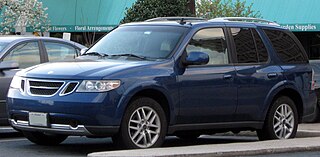 W
WThe Saab 9-7X is a mid-size luxury SUV that was built by General Motors for the American market and sold under the Saab marque. The 9-7X was first revealed at the 2004 New York International Auto Show, and was available starting in the model year of 2005, as a replacement for the Oldsmobile Bravada.
 W
WThe Saab 60 was a 'special'. It was a limited edition modification of the 1962 Saab 96, peculiar to the UK. Modifications were carried out at Saab (GB) Ltd, in Slough.
 W
WThe Saab 90 is a family car from Saab made from September 1984 to 1987. It was manufactured at a facility in Uusikaupunki (Nystad), Finland, at that time owned by Saab and Valmet. The 90 was a continuation of the Saab 99 and it was basically a Saab 99 from the B-pillar forward with the rear of a Saab 900 sedan. The 90, while easier to build than the 99, was still considerably more labour-intensive than the more modern 900.
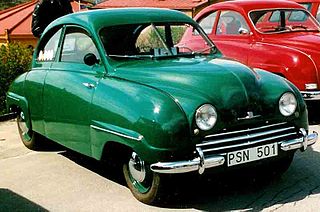 W
WThe Saab 92 was the first production car from Saab. The design was very aerodynamic for its time, with a drag coefficient of 0.30. The entire body was stamped out of one piece of sheet metal and then cut to accommodate doors and windows. Full-scale production started December 12, 1949, based on the prototype Ursaab. All of them were of the Deluxe version. A standard version was advertised, but nobody was interested in buying it so no standard versions were produced.
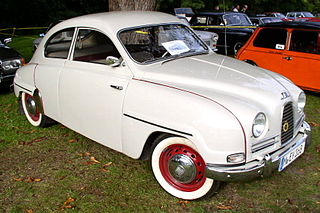 W
WThe Saab 93 is the second production automobile that was manufactured by Saab. Styled by Sixten Sason, it was first presented on December 1, 1955. The 93 was powered by a longitudinally-mounted three-cylinder 748 cc Saab two-stroke engine giving 33 hp (25 kW). The gearbox had three gears, the first unsynchronised. In order to overcome the problems of oil starvation on overrun for the two-stroke engine, a freewheel device was fitted. In 1957, two-point seatbelts were introduced as an option. The 93 was the first Saab to be exported from Sweden, with most exports going to the United States. A Saxomat clutch and a cabrio coach were available as options.
 W
WThe Saab 95 is a seven-seater, two-door station wagon which was produced by Saab from 1959 to 1978.
 W
WThe Saab 96 is an automobile manufactured and marketed by Saab from 1960 to January 1980, replacing the 93. The 96 featured aerodynamic two-door bodywork, four-passenger seating and at first a two-stroke, three-cylinder engine, later a four-stroke V4.
 W
WThe Saab 99 is a car which was produced by Saab from 1968 to 1984; their first foray into a larger class than the 96. While considered a large family car in Scandinavia, it was marketed as a niche compact executive car in most other markets. It was manufactured both in Sweden and Finland and was succeeded by the Saab 900, although the 99 continued to be produced alongside its successor. The Saab 90, an updated, less complex version using many 900 parts took over from the 99 in late 1984.
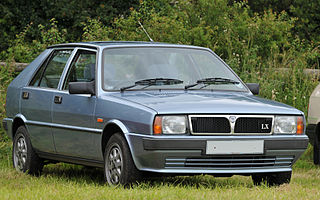 W
WThe Lancia Delta is a small family car produced by Italian automobile manufacturer Lancia in three generations. The first generation (1979-1994) debuted at the 1979 Frankfurt Motor Show, the second generation (1993-1999) debuted at the 1993 Geneva Motor Show, and the third generation (2008-2014) debuted at 2008 Geneva Motor Show.
 W
WThe Saab 900 is a mid-sized automobile which was produced by Saab from 1978 until 1998 in two generations. The first generation from 1978 to 1993 is known as the "classic" and the generation from 1994 to 1998 is known as the "new generation".
 W
WThe Saab 9000 is an automobile produced by the Swedish company Saab from 1984 to 1998. Representing the company's foray into the executive car scene, it was developed as a result of the successes of the turbocharged 99 and 900 models. The 9000 remained in production until May 1998 and it was replaced by the Saab 9-5 in late 1997, although some final cars were produced into 1998. The Saab 9000 was only available with petrol engines, as 5-door hatchback or 4-door notchback and never as a convertible or a Coupé.
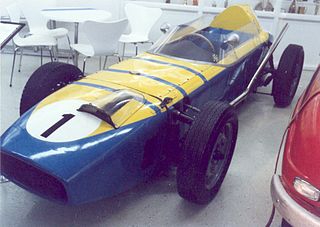 W
WThe Saab Formula Junior was a car built in 1960 by the Swedish car maker Saab.
 W
WThe Saab GT750 is an automobile from Saab produced between 1958 and 1960. It was introduced at the New York International Auto Show in 1958 and featured safety belts as standard, which soon became commonplace on most cars.
 W
WThe Saab 401 MEFA was an experimental air-cushioned vehicle with a weight of 2 tons and capable of about 40 knots on open water with two people on board. A single prototype was built under contract to the Swedish Navy. The craft was first tested in 1963. The Navy retired the project in 1967 when it donated the 401 prototype to the Maritime Museum in Karlskrona Sweden.
 W
WThe Saab Aero marque represents the high-performance division of cars produced by Saab Automobile. The Aero marque is in reference to Saab's history as an aircraft manufacturer. The first Aero model was the 1984 Saab 900 Aero, and every Saab model has been offered in an Aero trim level since then. The final Aero model was the 2014 Saab 9-3, which was manufactured by the holding company NEVS. This was also the last time a Saab-branded vehicle has been manufactured by the holding company.
 W
WSaabO is a caravan created and manufactured by Saab from 1964-1968 in Ljunga, outside Norrköping, Sweden.
 W
WSaalina was a four-meter-long (13 ft) boat made by SAAB after World War II.
 W
WThe Saab Sonett is an automobile manufactured between 1955 and 1957 and again between 1966 and 1974 by Saab of Sweden. Sonetts shared engines and other components with Saab 93, 95 and 96 of the same era. It was mainly intended for the lucrative American export market and was only offered intermittently in the Swedish domestic market.
 W
WThe Saab Sport is an automobile from Saab, launched in 1962 as a replacement for the Saab GT750. It used the same body shell as the Saab 96, with slight modifications and with a different interior configuration and equipment. From the outside it could be differentiated from a standard 96 by the twin chrome stripes along the lower part of the sides.